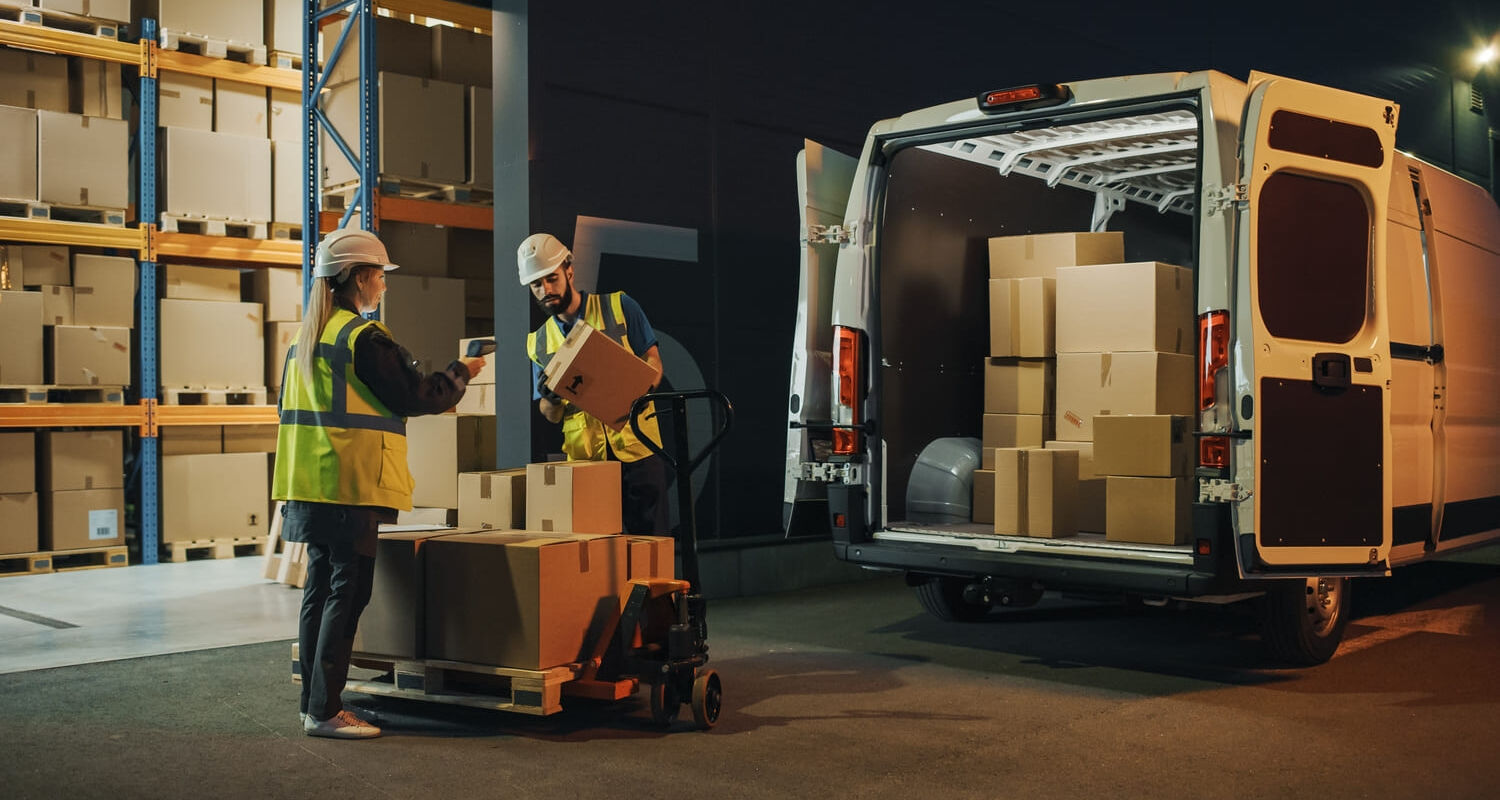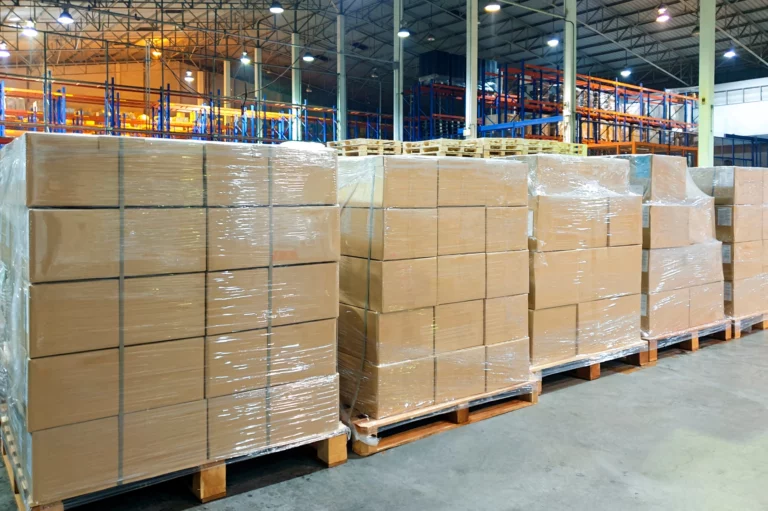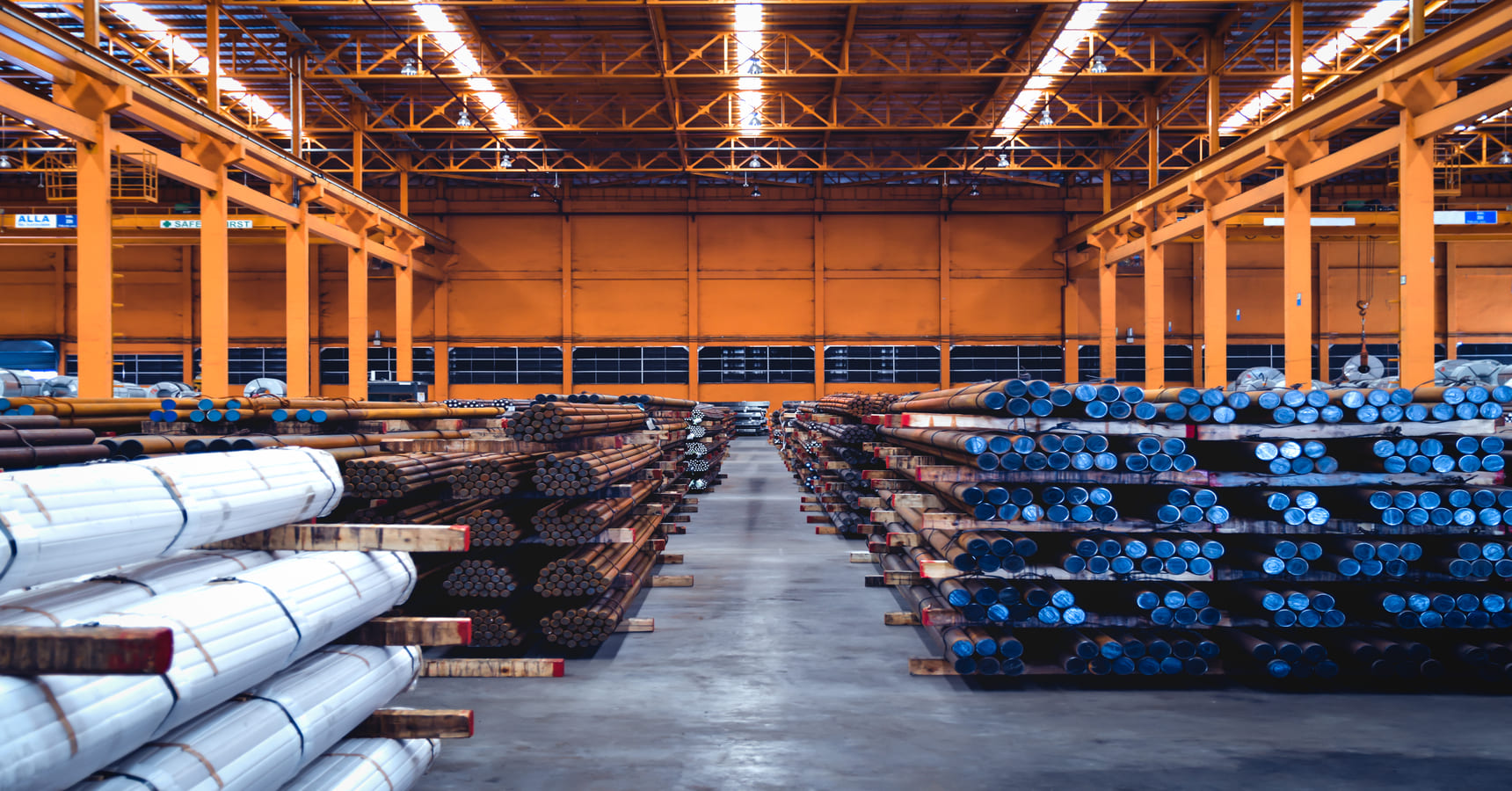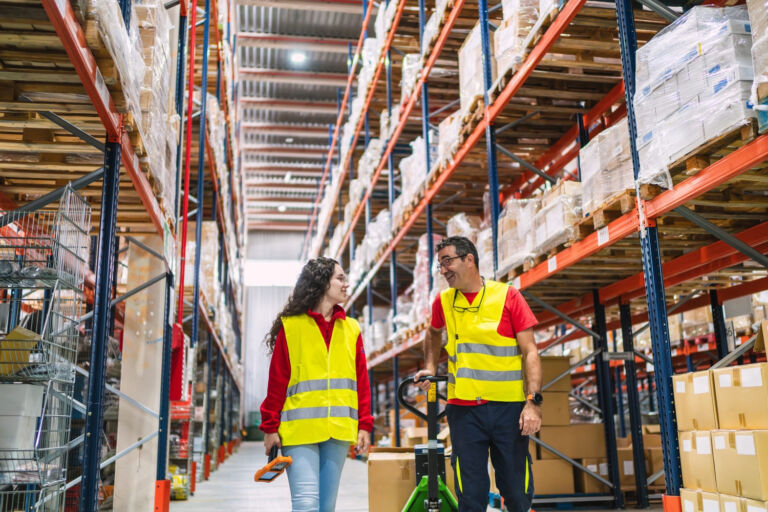Impact of E‑Commerce on Warehousing & Fulfillment: Trends, Challenges and the Future of Logistics

The explosive growth of e‑commerce has turned warehouses into the heartbeat of customer experience. Global online retail sales are forecast to exceed $6.5 trillion by 2025, and the number of digital buyers is expected to reach 2.6 billion. Shoppers now demand same‑day or next‑day delivery and real‑time tracking; studies show that 68 % of online shoppers consider delivery speed a deciding factor. These expectations mean that ecommerce warehousing is no longer simply about storage – it’s about agility, precision and technology‑driven fulfillment.
What is e‑commerce warehousing?
Ecommerce warehousing refers to the specialized storage, management and movement of products sold through online platforms. Unlike traditional facilities that handle bulk shipments, an ecommerce fulfillment warehouse or fulfillment center focuses on high‑frequency, small‑order processing for direct‑to‑consumer delivery. Key features include:
- Inventory management systems (IMS) and AI‑enabled WMS: Provide real‑time visibility and demand forecasting, reducing errors and stockouts.
- Automated storage & retrieval systems (ASRS): Robots and conveyors move items quickly, freeing workers for value‑added tasks.
- Packing and labeling automation: Ensures orders are accurately picked and shipped.
- Returns management zones: Dedicated areas and software streamline reverse logistics.
- E‑commerce integrations: Connect to platforms like Shopify, Amazon or WooCommerce for seamless order flow.
Local warehouses for e‑commerce and micro‑fulfillment centers are becoming popular. These smaller facilities position inventory closer to urban customers for two‑hour or same‑day delivery. Third‑party logistics (3PL) providers also offer e‑commerce warehousing services that scale space and technology on demand.
Inside an ecommerce fulfillment center: how it works
An ecommerce fulfillment center coordinates every step from receipt to last‑mile delivery. The process usually involves:
- Receiving and inspection: Goods arrive from suppliers, are checked for quality and scanned into the warehouse management system.
- Storage optimization: Inventory is placed using dynamic slotting strategies, with high‑velocity items near packing stations for faster picking.
- Order processing: When customers place orders, the system automatically sends tasks to pickers or robots.
- Picking and packing: Associates or robotic arms locate items, verify barcodes, pack them using right‑sized packaging and print shipping labels.
- Shipping and last‑mile delivery: Algorithms select carriers based on cost and speed; orders are dispatched via local carriers, courier networks or in‑house fleets.
- Returns & reverse logistics: Returned items are assessed, refurbished when possible, and reintegrated into inventory. Efficient reverse logistics is crucial because U.S. retail returns reached $627 billion (8.5 % of sales) in 2023 and UK return rates range 20–50 %.
raditional warehouses vs. ecommerce fulfillment centers
| Aspect | Traditional warehouse | Ecommerce fulfillment center |
|---|---|---|
| Primary purpose | Bulk storage & pallet shipments | High‑frequency, small‑parcel orders |
| Order profile | Large, infrequent orders | Many single‑item orders |
| Location | Often near suppliers or transport hubs | Near population centers / micro‑fulfillment hubs |
| Technology | Basic WMS, manual picking | Advanced WMS, ASRS, robotics, analytics |
| Returns management | Limited | Dedicated reverse‑logistics processes |
Challenges in modern ecommerce warehousing
Rapid growth brings obstacles:
- Labour shortages: Finding and retaining skilled warehouse workers is difficult, especially during peak seasons.
- Space constraints & rising real estate costs: Urban warehouses are expensive; businesses adopt vertical racking, mezzanines and micro‑warehouses.
- Operational costs & sustainability: Energy, transportation and equipment costs are rising. Consumers and investors expect green warehousing – renewable energy, energy‑efficient lighting and recyclable packaging.
- Complex inventory & diverse SKUs: Warehouses must handle perishable goods, oversized furniture and everything in between.
- Returns management: The surge in returns during events like Black Friday and Cyber Monday can consume up to 20–30 % of capacity.
- Technology integration: Integrating legacy systems with new automation and analytics remains challenging.
Trends shaping ecommerce warehousing
Automation & robotics
Automated guided vehicles (AGVs), robotic picking arms, drones and conveyor sorting systems boost productivity and reduce error rates. Affordable solutions now exist for small and mid‑sized businesses, such as mobile robots for piece picking and collaborative robots (cobots) that work alongside humans.
Micro‑fulfillment & hyperlocal centers
Retailers are investing in micro‑fulfillment centers located within or near urban areas to enable same‑day delivery. These facilities leverage automation and AI to maximize storage capacity and accelerate order turnaround. Local warehouses for ecommerce also support in‑store pickup and returns.
Data‑driven operations & AI
Advanced analytics and AI‑powered forecasting tools help predict demand, optimize inventory placement and reduce stockouts. Real‑time dashboards support decisions on labour allocation, routing and packaging.
Sustainability & green warehousing
Consumer demand for environmentally responsible practices drives adoption of solar panels, wind power and energy‑efficient HVAC. Right‑sized packaging reduces material waste. Circular logistics models integrate forward and reverse flows to reuse materials and reduce emissions.
Flexible, on‑demand storage & 3PL partnerships
On‑demand warehousing allows companies to rent space and labour only when needed, supporting seasonal surges. 3PL ecommerce fulfillment services provide scalability, advanced technology and expertise in reverse logistics. By outsourcing to a 3PL, businesses can focus on product development and marketing.
Omnichannel integration
Unified inventory systems enable customers to buy online and pick up in‑store or return items to nearby locations. Ship‑from‑store and multi‑location fulfillment models improve service levels and reduce shipping costs.
Best practices for building an efficient ecommerce fulfillment warehouse
- Invest in scalable WMS & IMS: Choose cloud‑based systems that integrate with e‑commerce platforms, carriers and ERPs to maintain accuracy and visibility.
- Adopt automation early: Start with bar‑code scanning or conveyor belts; scale up to robotics as order volume grows.
- Design for flexibility: Use modular shelving, adjustable racking and mezzanine levels to adapt quickly to demand fluctuations.
- Focus on workforce training & safety: Train staff to work with automation, emphasise ergonomic practices and implement safety protocols.
- Optimize packaging & materials: Implement right‑sizing algorithms, eco‑friendly packaging and printing-on-demand to reduce waste and shipping costs.
- Leverage data & analytics: Track metrics like pick time, order accuracy, return rate and labour productivity to identify bottlenecks and drive continuous improvement.
- Plan for reverse logistics: Dedicate space and processes for returns, refurbishment and restocking to protect margins.
- Partner with specialized 3PL providers: Outsourcing can provide access to advanced technology, multiple locations and scalable labour.
The future of warehousing & logistics
Ecommerce growth and the lessons of the COVID‑19 pandemic indicate that warehouses will continue to evolve. Expect more AI‑powered decision‑making, IoT‑enabled visibility, autonomous mobile robots and drone deliveries. Cloud‑based platforms will connect warehouses, carriers and storefronts in real time. Sustainability will remain central, with green building designs and circular logistics models. Companies that invest in adaptable systems and continuous learning will be best positioned to succeed.
Conclusion
The impact of e‑commerce on warehousing is profound: fulfillment centers are now high‑tech hubs that deliver on speed, accuracy and sustainability. By embracing automation, data‑driven decision‑making, micro‑fulfillment and 3PL partnerships, businesses can offer exceptional customer experiences while controlling costs. Looking ahead, continuous innovation and a commitment to sustainability will shape the future of warehousing and logistics.
At OLIMP Warehousing, we specialize in modern ecommerce warehousing services, offering flexible space, advanced technology and a network of local warehouses for ecommerce across major markets. Contact us today to learn how we can optimize your e‑commerce warehousing and order fulfillment operations.
Frequently Asked Questions (FAQ) – OLIMP Warehousing
Q: What is e‑commerce warehousing?
It is the specialized storage and management of products sold online. Modern ecommerce warehouses combine technology, automation and efficient workflows to process high volumes of small orders quickly and accurately.
Q: How has e‑commerce changed warehousing and fulfillment?
E‑commerce introduced smaller, more frequent orders, demand for faster delivery and real‑time tracking. This shift drove adoption of automation, data‑driven planning, micro‑fulfillment centers and advanced WMS.
Q: What is the difference between a fulfillment center and a warehouse?
Traditional warehouses store goods in bulk for B2B shipments. Fulfillment centers are optimized for picking, packing and shipping individual online orders with tight delivery windows.
Q: How do businesses handle returns in e‑commerce?
Returns management is critical; U.S. retail returns reached $627 billion in 2023. Efficient reverse logistics involves dedicated areas for inspection, refurbishment and restocking, with software that tracks return status and minimizes losses.
Q: What services does a 3PL provide for ecommerce warehousing?
Third‑party logistics providers offer scalable warehousing space, advanced technology, inventory management, shipping and returns processing. They enable companies to handle demand surges without investing in new facilities.
You may be interested in

Ecommerce Warehouse: What Is It and How to Find One?
In today’s fast-paced digital marketplace, efficient ecommerce warehousing is pivotal for timely order fulfillment and customer satisfaction. Whether you’re a budding online retailer or an established ecommerce giant, understanding and selecting the right warehousing solution can significantly impact your business’s success. What Is An Ecommerce Warehouse? An ecommerce warehouse is a storage facility that holds […]

Essential Guide to Industrial Warehousing: Key Features, Technologies & Challenges
Industrial warehousing plays a pivotal role in the global supply chain, ensuring the efficient storage, management, and distribution of goods. In the broader transportation and warehousing industry, millions of people are employed to keep products moving (about 6.6 million in the U.S. as of mid-2024). North America (including the USA, Canada, and Mexico) similarly relies […]

Choosing the Right National 3PL for D2C E‑Commerce Fulfillment
Direct‑to‑consumer (D2C) e‑commerce has exploded in recent years. Lockdowns accelerated a decade of growth within just a few months, and consumer expectations for fast, affordable delivery have never been higher. A 2025 survey shows that 74 % of online shoppers expect delivery within two days and 56 % of shoppers aged 18‑34 expect same‑day delivery. In this […]
Ready to streamline your warehousing needs?
Request a quote today and discover how OLIMP's tailored solutions can optimize your operations